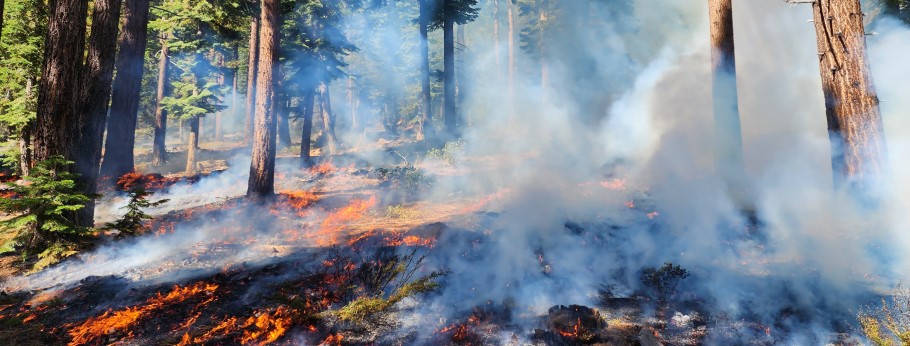
Dec 12, 2023
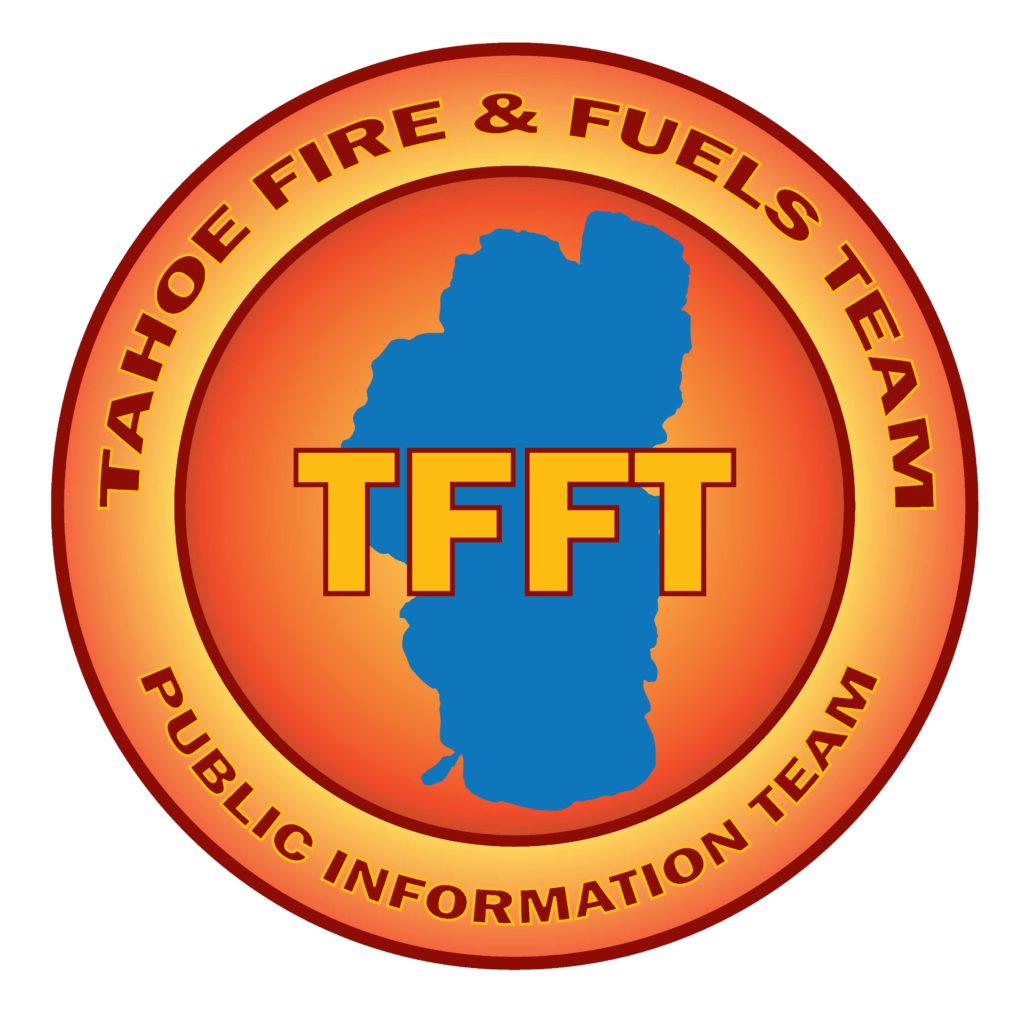
Collaborative Work Prepares Tahoe Communities for Wildfire
Lake Tahoe, California/Nevada – Tahoe’s trees are now draped in snow, and wildfire is not top of mind for most people. The Tahoe Fire and Fuels Team (TFFT), however, is taking action year round to protect lives, property, and the environment within the Lake Tahoe Basin from wildfire. This collaborative group formed in 2008 and includes 21 federal, tribal, state, and local conservation, land management, and fire agencies.
“One of the most important ways that we improve forest health and our community’s safety is by implementing priority fuel reduction projects such as thinning trees and conducting prescribed burns,” says North Lake Tahoe Fire Protection Division Chief Isaac Powning, Incident Commander of the TFFT.
In 2023, partners treated thousands of acres of forested and urban lots to reduce hazardous fuels. They made significant progress on many urgent Environmental Improvement Program (EIP) projects, such as NV Energy’s Resilience Corridors Project. The project is thinning forests around NV Energy utility infrastructure reducing hazardous fuels that could otherwise ignite a fire. Once complete, the project will create resilient forests adjacent to 28 miles of NV Energy utility infrastructure and will have thinned 290 acres.
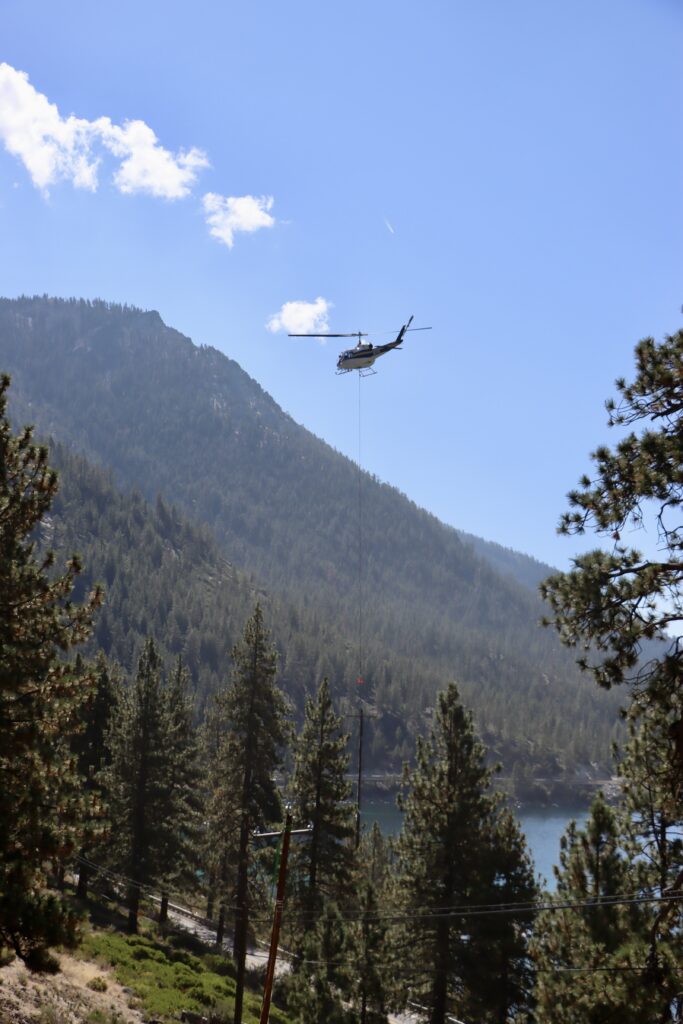
NV Energy’s Resilience Corridors Project is thinning forests around NV Energy utility infrastructure reducing hazardous fuels that could otherwise ignite a fire. Credit: NV Energy
“This work is crucial in improving the safety and resilience of our power system that serves the Lake Tahoe Basin, while at the same time improving forest health and being respectful of the sensitive ecosystem and environment the Tahoe area has to offer,” said Jesse Murray, Vice President of energy delivery and natural disaster protection for NV Energy.
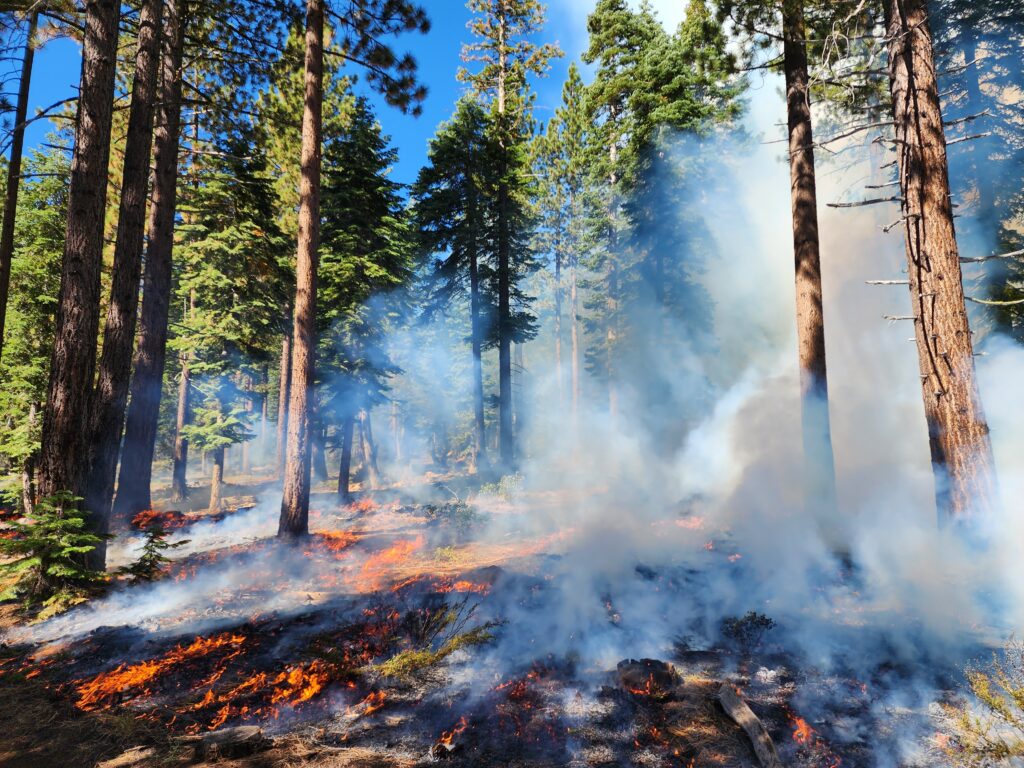
California State Parks conducted a prescribed fire understory burning operation on a 60-acre plot in Burton Creek State Park this fall. Credit: Rich Adams, California State Parks
Thinning forests is only part of the equation. Partners then must remove the biomass by hauling it away or conducting prescribed burns. California State Parks conducted a prescribed fire understory burning operation on a 60-acre plot in Burton Creek State Park this fall. Understory burns improve forest health but are only administered following initial fuel reduction and pile burning to reduce the amount of understory vegetation. Managing and maintaining this forest landscape will provide additional fire protection to adjacent homes and community structures in the event of a wildfire.
“Most people recognize that the smoke generated from these prescribed burns is vastly better than the smoke we’d see if a wildfire burned through an un-maintained landscape,” said Rich Adams, Natural Resources Manager with California State Parks. “When we burn, we have to follow strict standards, but wildfires can be much more prolonged and difficult to contain.”
TFFT partners work closely with the community to educate people about how to prepare for wildfire. Fire protection districts and other partners inspected and provided chipping and home hardening and defensible space recommendations for thousands of privately-owned properties this year. TRPA inspected and provided tree removal permits to more than 1,000 homeowners. In Incline Village, partners conducted an evacuation drill to test the effectiveness of the regional evacuation, current shelter, and mass care plan in response to a simulated wildland fire. And neighborhoods are banding together to create Fire Adapted Communities with the help of Tahoe Resource Conservation District (Tahoe RCD).
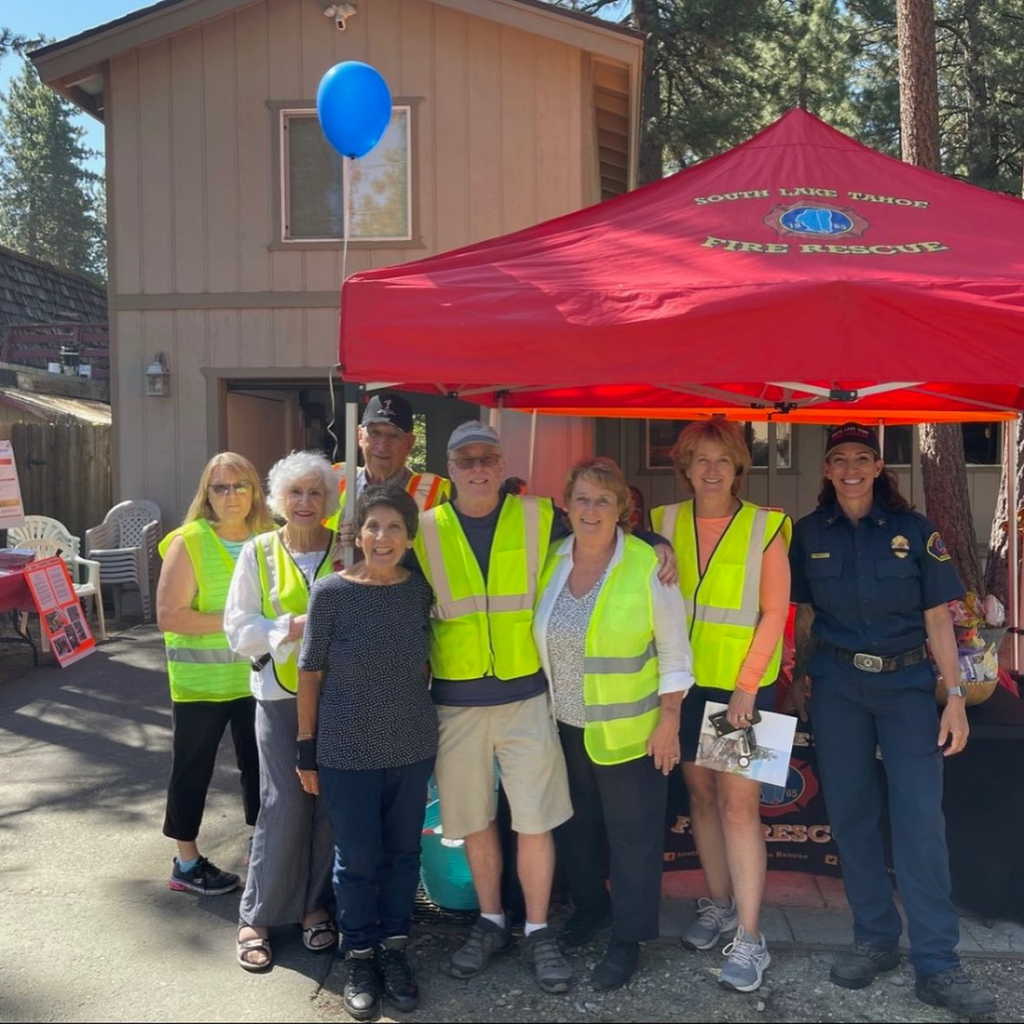
City of South Lake Tahoe Fire and Rescue’s Battalion Chief Kim George with Firewise community members at a workday event. Credit: Tahoe RCD
“More and more communities are becoming Firewise, a national recognition program to assist with becoming more resistant to wildfire,” said Jason Brand, Fire Adapted Communities Program Manager with Tahoe RCD. “In April of 2022 we had 12 Firewise neighborhoods in Tahoe. Now we have 31 certified communities.”
Tahoe RCD has also been leading the Community Wildfire Protection Plan (CWPP) update, a vital initiative aimed at safeguarding our community against the threat of catastrophic wildfires. They held virtual and in-person public meetings around the basin and received more than 600 responses to a bilingual survey to help shape the update. The CWPP draft will be available for public comment in spring of 2024, and once complete will help attract funding and prioritize projects in Lake Tahoe.
“It’s incredible to see how much we’ve accomplished this year working with partners and our communities,” said TFFT Incident Commander Isaac Powning. “Thank you to everyone who has contributed to making Lake Tahoe safer. We’ve got a long way to go, but I’m confident we’ll get there by continuing to collaborate on key forest health projects, community education, and partnerships at all levels.”
Learn more about Tahoe’s forest health-focused Environmental Improvement projects at eip.laketahoeinfo.org/EIPFocusArea/Detail/2 and how to stay prepared for wildfire year round at TahoeLivingWithFire.com
###
About the Tahoe Fire & Fuels Team
The Tahoe Fire & Fuels Team (TFFT) consists of representatives of Tahoe Basin fire agencies, CAL FIRE, Nevada Division of Forestry and related state agencies, University of California and Nevada Cooperative Extensions, the Tahoe Regional Planning Agency, the USDA Forest Service, conservation districts from both states, the California Tahoe Conservancy, and the Lahontan Regional Water Quality Control Board. Our Mission is to protect lives, property, and the environment within the Lake Tahoe Basin from wildfire by implementing prioritized fuels reduction projects and engaging the public in becoming a Fire Adapted Community.
For more information, visit TahoeLivingWithFire.com.
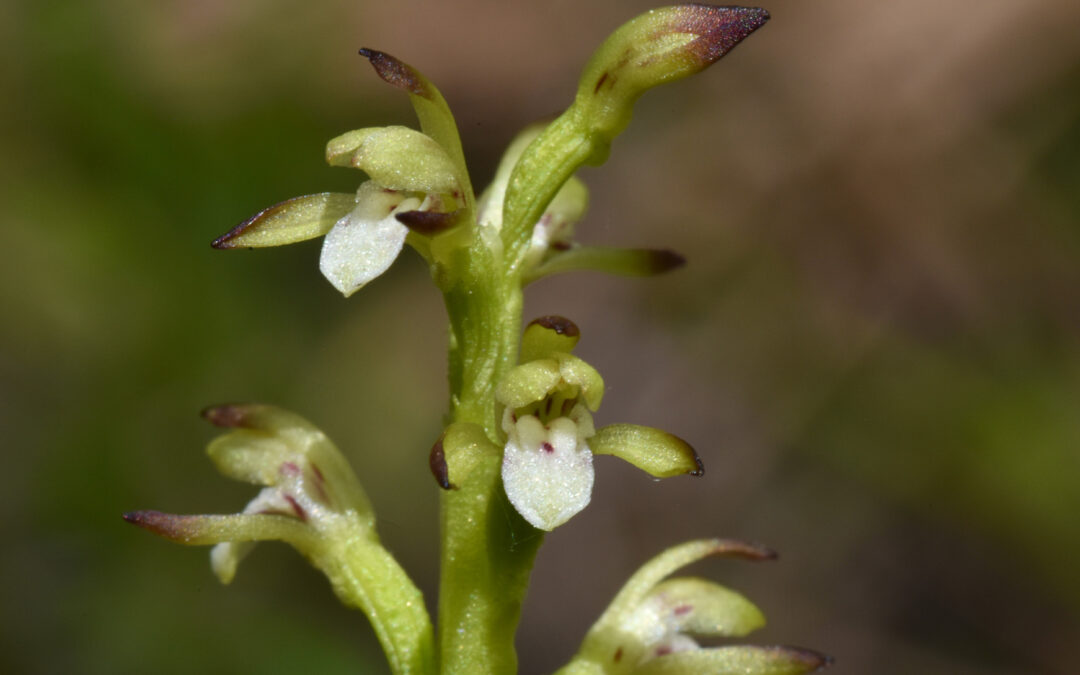
Dec 10, 2023
The 25th issue of Tahoe In Depth is hitting the streets and will be in mailboxes soon. Enjoy articles on clever bears, a rare wild orchid, adaptive mountain athlete programs, a park ranger’s perspective, and many more.
Tahoe In Depth Winter 2023
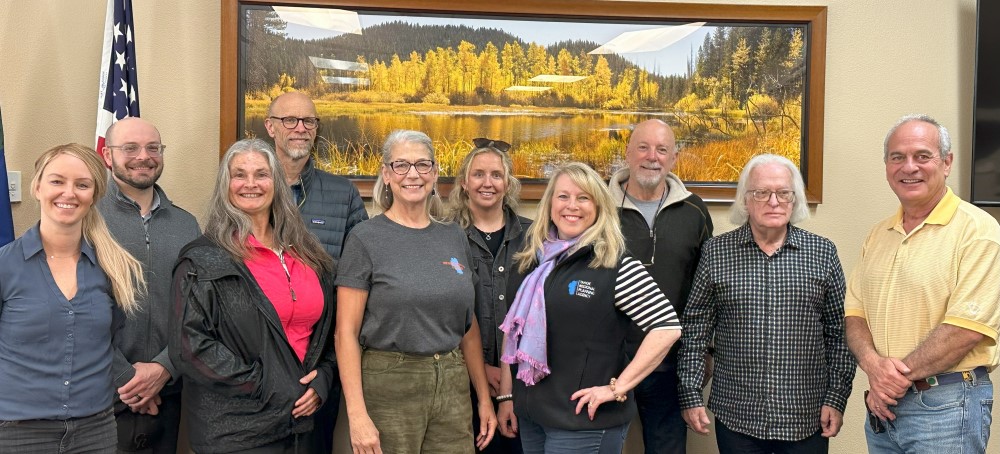
Oct 20, 2023
By Julie Regan
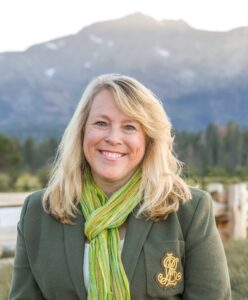 This summer I had the pleasure of meeting with community members around the lake through a series of TRPA Talks that were both enlightening and inspiring. As I approach completion of my first year as Executive Director of the Tahoe Regional Planning Agency (TRPA), I am reflecting on the issues that are top of mind in our community and am grateful for the kindred spirits that are passionate about Lake Tahoe.
This summer I had the pleasure of meeting with community members around the lake through a series of TRPA Talks that were both enlightening and inspiring. As I approach completion of my first year as Executive Director of the Tahoe Regional Planning Agency (TRPA), I am reflecting on the issues that are top of mind in our community and am grateful for the kindred spirits that are passionate about Lake Tahoe.
The talks were enlightening because I was able to see the connections that TRPA’s work has to our communities’ and the lake’s greatest needs; and inspiring because, even though I have been at TRPA for 20 years, I was reminded how critical the agency’s role in the region remains.
Just as the Lake Tahoe Basin is connected environmentally, our communities are experiencing many of the same challenges from north to south and east to west around the basin. While the concerns are significant, so is the common ground from which we can build. There is also significant alignment between concerns and TRPA’s strategic priorities set by our volunteer 15-member Governing Board.
Tahoe Living
The shortage of affordable housing was part and parcel of every talk. The housing crisis is harming the lake as more workers commute into the basin, and as I heard from many of you, it is impacting the fabric of our communities. TRPA and our housing partners are bringing forward solutions in many shapes and sizes, from subsidized, deed-restricted workforce housing projects to regional changes to encourage these privately funded projects. In our role as the region’s bi-state land-use agency, TRPA is updating policies to encourage more affordable and workforce housing investments that also bring water quality and transportation improvements.
This fall, TRPA planners are bringing forward targeted improvements to design standards such as land coverage, building height, and allowed density that will lower the cost to build multi-family housing for local workers. These changes would only apply to deed-restricted homes. Modernizing our land-use policies is an important step, but much larger solutions are needed. TRPA will be scaling up in the coming year to address equity issues and build the region’s capacity to deliver both housing and climate change solutions.
Keeping Tahoe Moving
Traffic congestion on the basin’s roadways is a concern we all share. Transportation is a cross-cutting issue where concerns about air and water quality, safety, equity, tourism, and climate resilience come together. Through the Lake Tahoe Environmental Improvement Program, basin partners have completed significant bike and pedestrian, transit, and roadway safety improvements in recent years. Each of these projects brings the vision of a safe and interconnected transportation system closer to reality. TRPA is helping increase the pace of projects coming forward by leading broad-based coordination among corridor management agencies and bringing millions of dollars to the basin from federal and state grants.
The bi-state compact that formed TRPA more than 50 years ago envisioned the kind of partnership we are leading in transportation today. In Tahoe’s most visited recreation corridors, partners are implementing projects to reduce roadside parking, increase transit and trail use, and lay the framework for reservation systems to better manage peak demand.
Restoration and Reilience
With the news of the devastating wildfires in Maui, emergency response and evacuation preparedness are a top priority for everyone who lives in a fire-prone area like Lake Tahoe. Partners on the Tahoe Fire and Fuels Team have so far treated 92,000 acres of forest and conducted more than 63,000 defensible space evaluations to reduce the threat of catastrophic wildfire to our communities. Some of this work helped save Lake Tahoe from the Caldor Fire in 2021 that led to the evacuation of more than 30,000 people from the South Shore.
In partnership with the Tahoe Fire and Fuels Team, TRPA is taking part in communication and coordination work among emergency management agencies. Like the improvements TRPA helped make after the 2007 Angora Fire, staff is working with basin fire chiefs post-Caldor Fire to find new ways to improve coordination. The top priority for TRPA is to continue supporting major forest health and resilience projects, including those that help keep evacuation corridors safe.
These are a few of the connections I made during our TRPA Talks this year and I look forward to more as the leaves continue to turn and we head into the winter season. I want to thank everyone who came out for sharing your stories and suggestions. To stay up to date on our strategic priorities and future TRPA talks, sign up for our eNews.
Julie Regan is Executive Director of the Tahoe Regional Planning Agency
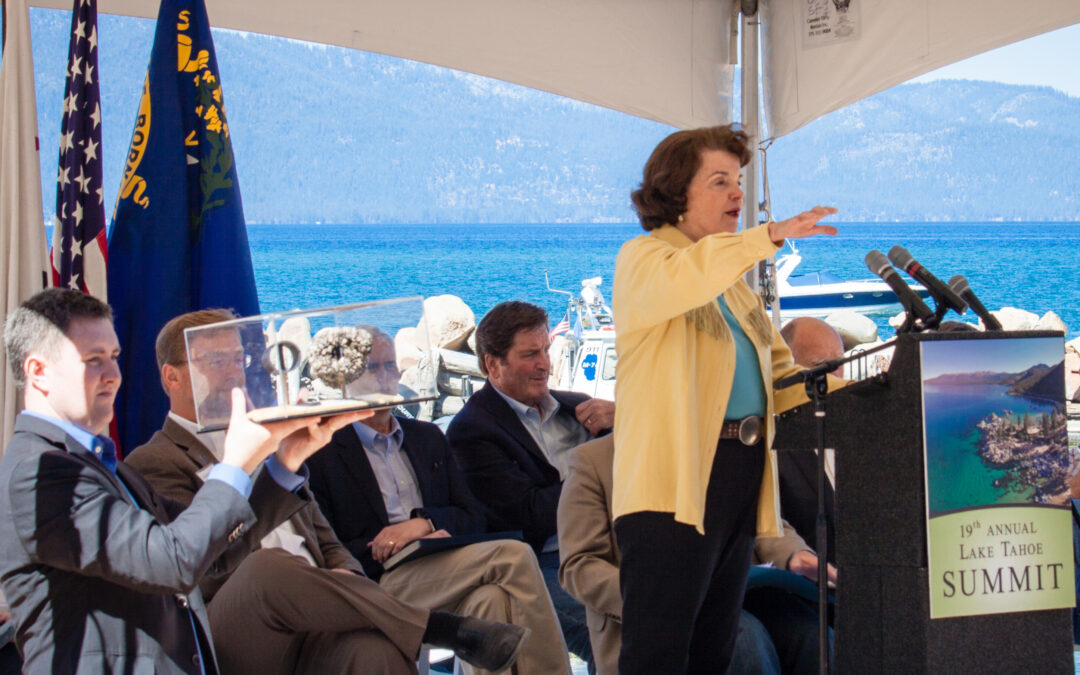
Sep 29, 2023
Lake Tahoe and the nation lost an irreplaceable leader today with the passing of U.S. Senator Dianne Feinstein. On behalf of the partnership of Lake Tahoe organizations who the Senator dubbed “Team Tahoe,” we send our heartfelt condolences to her family, colleagues, and staff.
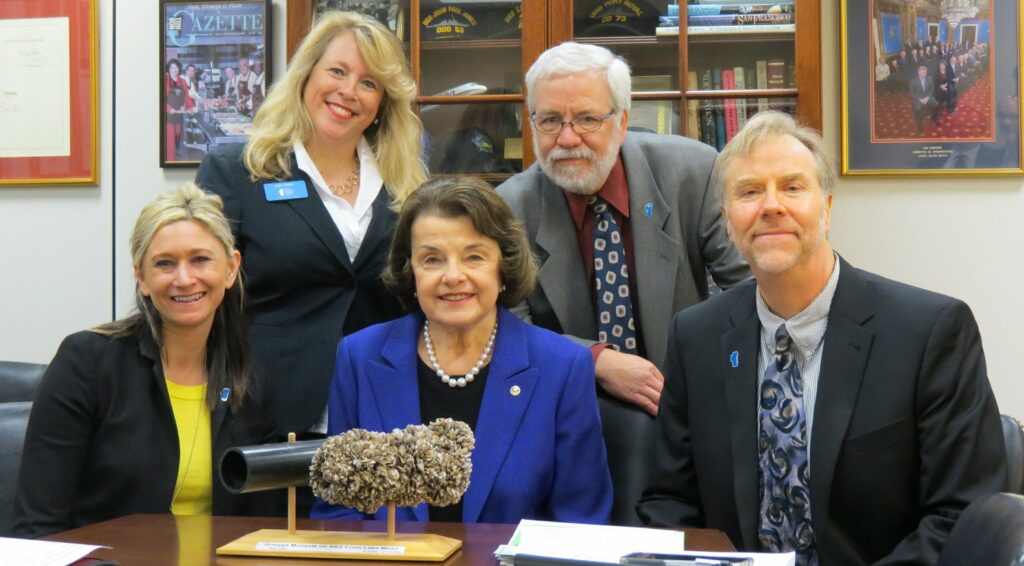
Tahoe leaders representing the broader “Team Tahoe” partnership pictured in 2017 with the Senator. From left to right: Dr. Darcie Goodman Collins, League to Save Lake Tahoe, Julie Regan, Tahoe Regional Planning Agency, Steve Teshara, Sustainable Community Advocates, and Andrew Strain, Vail Resorts.
Credit: Office of U.S. Senator Dianne Feinstein
Senator Feinstein was a stalwart protector of Lake Tahoe and a key architect of the Lake Tahoe Restoration Act, which launched the Lake Tahoe Environmental Improvement Program, one of the most comprehensive landscape-scale conservation programs in the nation. Through the last 25 years of her storied career, Senator Feinstein championed Lake Tahoe’s core environmental restoration initiatives, especially forest health, wildfire preparedness, and aquatic invasive species protections.
Feinstein was instrumental in passing the Lake Tahoe Restoration Act of 2000, landmark legislation that delivered $300 million in federal support for Environmental Improvement Program projects in the Tahoe Basin. She also spearheaded renewal of the Lake Tahoe Restoration Act in 2016, which since enactment has provided an additional $110 million for further Environmental Improvement Program projects. She also helped secure $17 million for the lake Tahoe Aquatic Invasive Species Program through the Bipartisan Infrastructure Law.
Senator Feinstein’s tireless work on behalf of the Tahoe partnership has ensured future generations are able to enjoy the same beautiful lake where she spent many of her childhood days. Alongside her compatriot in Lake Tahoe’s preservation, the late U.S. Senator Harry Reid, Senator Feinstein holds a place of honor in Lake Tahoe’s conservation success story. The two leaders have passed their passion for Tahoe’s preservation on to U.S. Senators Catherine Cortez Masto and Jacky Rosen of Nevada, and their colleague Alex Padilla of California.
Team Tahoe expresses our deep gratitude for Senator Feinstein’s leadership, friendship, and dedication to this national treasure which she believed so strongly in protecting.
Under the collaborative Lake Tahoe Environmental Improvement Program, federal, state, local, and private funds have led to completion of more than 92,000 acres of forest health projects, 107,000 aquatic invasive species watercraft inspections, and 198 miles of bike path improvements as well as hundreds of watershed restoration, water quality, and transportation improvement projects.

The late Senator Feinstein with TRPA Executive Director Julie Regan.
Team Tahoe partners include representatives from federal agencies including the USDA Forest Service, the states of Nevada and California, the Washoe Tribe of Nevada and California, local governments, and representatives from the private sector including the Tahoe Fund and the League to Save Lake Tahoe. For more information, contact Jeff Cowen, Public Information Officer, at jcowen@trpa.gov, or (775) 589-5278.
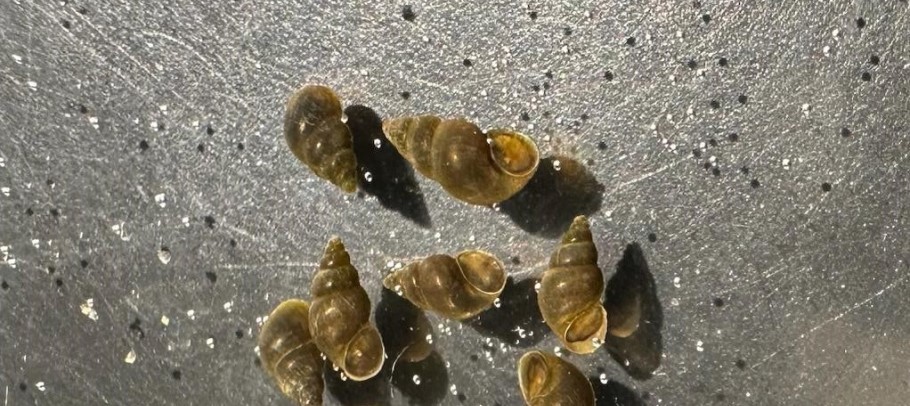
Sep 22, 2023
Contact Jeff Cowen, Public Information Officer, (775) 589-5278
September 21, 2023
Lake Tahoe, CA/NV – Divers monitoring Lake Tahoe have discovered invasive New Zealand mudsnails in areas off the South Shore, the Tahoe Regional Planning Agency (TRPA) and Tahoe Resource Conservation District (Tahoe RCD) announced today. This is the first time the species has been detected in the Tahoe Basin.
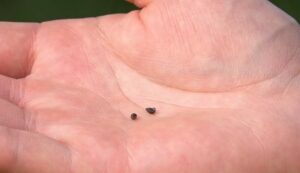
Invasive New Zealand mudsnails have been discovered in Lake Tahoe, a highly protected alpine Lake on the California/Nevada border. Image Credit: Michigan Department of Natural Resources
The Lake Tahoe Aquatic Invasive Species Program includes comprehensive monitoring of Lake Tahoe for aquatic invaders. Contract divers with Marine Taxonomic Services, Ltd. surveying invasive weeds on the South Shore discovered tiny snails on the bottom of the lake nearly a half mile offshore from the mouth of the Upper Truckee River. Consultation with experts and a DNA lab analysis confirmed the species is New Zealand mudsnail, an aquatic invasive species (AIS) that has been detected in nearby waterways including the Lower Truckee River downstream from Lake Tahoe near Reno, Nevada. No other AIS, such as the destructive quagga and zebra mussel, have been detected, according to the agencies.
Following rapid response protocols under the federally approved Lake Tahoe Aquatic Invasive Species Management Plan, TRPA convened an incident team comprised of staff from TRPA and Tahoe RCD and partner experts. The team is rapidly deploying scientists, beginning with lake-wide dive surveys to determine the extent of the infestation and sharing all available information with state and federal wildlife managers through the Lake Tahoe Aquatic Invasive Species Coordinating Committee. For continued updates and information, visit the New Zealand mudsnail page.
“Lake Tahoe is one of the most protected waterbodies in the United States and our aquatic invasive species monitoring program is credited as the reason for this concerning discovery,” TRPA Executive Director Julie Regan said. “It is critical that everyone remain vigilant and adhere to the mantra of Clean, Drain, and Dry. Every boater, paddler, and angler shares the responsibility to protect Lake Tahoe’s native species and the waters we enjoy.”
As climate change continues to affect Lake Tahoe’s native ecosystem, the threat of new invasive species taking hold in the region is increasing. . Under the Lake Tahoe Environmental Improvement Program, the AIS Program is helping protect water quality and native species and is a key program to improve the climate resilience of the region, according to TRPA.
Invasive species can be carried on boats, fishing gear, paddle craft, life vests, and beach toys, according to the national Stop Aquatic Hitchhikers! campaign. The most effective way to prevent their spread is to Clean, Drain, and Dry boats and gear before entering a new waterbody.
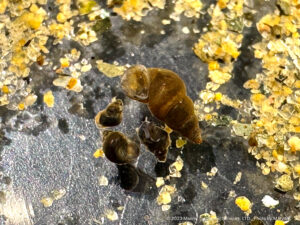
New Zealand mudsnails found in Lake Tahoe, shown with sand particles from the lake. Credit: Marine Taxonomic Services, Ltd.
Since 2008, the Lake Tahoe AIS Program has served as the national model and maintained one of the lowest risk profiles in the nation for introduction of new invasive species.
“Lake Tahoe’s robust watercraft inspection program, and commitment from the public, shows that preventing the spread of aquatic invasive species is possible,” said Lisa Heki, Lahontan National Fish Hatchery Complex Project Leader, U.S. Fish and Wildlife Service. “Now more than ever, we have to support and strengthen our work with anglers, boaters, paddlers, and everyone who interacts with the waters of Lake Tahoe and its 63 tributaries.”
Periodic monitoring for invasive species in the basin is an integral part of the Lake Tahoe AIS Management Plan. Early detection and rapid response also helps agencies control the spread of aquatic invasive weeds that were introduced before the inspection program, such as the ongoing weed removal project in Emerald Bay.
“Lake Tahoe has a well-established network of regional and national partnerships that are all working together to reduce the threat of AIS,” TRPA Aquatic Invasives Species Program Manager and incident team co-lead Dennis Zabaglo said. “The incident team and our partners are dedicated to protecting Lake Tahoe and will be working together to evaluate options for responding to this new finding.”
TRPA advocated for federal funds to be set aside for early detection and rapid response actions throughout the nation. Tahoe agencies are using critical federal funds to address the New Zealand mudsnail introduction.
Get up-to-date information on the response and potential protocols for management of the infestation on the TRPA New Zealand mudsnail page.
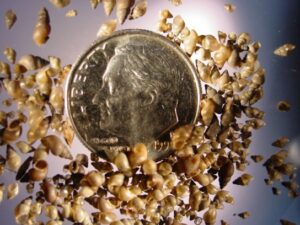
Invasive New Zealand mudsnails are notoriously difficult to detect due to their size, shown with a U.S. dime coin. Credit: U.S. Geological Survey of new invasive species
About New Zealand mudsnails
Not to be confused with highly destructive quagga and zebra mussels which have not been detected in Lake Tahoe, New Zealand mudsnails are often smaller than a grain of rice (2-6 mm). Like many AIS, without natural predators or controls, they can outcompete native species and harm ecosystem functions. First discovered in 1987 in Idaho, New Zealand mudsnails are currently found in 22 states including California and Nevada. They are able to colonize new waters quickly and due to their small size are difficult to detect. More information on the species is available from the U.S. Geological Survey.
About the Lake Tahoe Watercraft Inspection Program
TRPA and Tahoe RCD initiated the Lake Tahoe watercraft inspection program in 2008 when quagga and zebra mussels were discovered in Lake Mead, just 300 miles from the basin. Under the Lake Tahoe Environmental Improvement Program, more than 107,000 vessels have been inspected since the start of the program, which is considered a gold standard for the nation. Strict protocols reduce the risk posed by watercraft of spreading these species by requiring every vessel to be decontaminated that is known to have been in water associated with New Zealand mudsnails or other AIS. This process is enforced for both motorized and non-motorized watercraft at all ramps, launches, and staffed public beaches. Vessels visiting Echo and Fallen Leaf Lakes are required to be decontaminated regardless of where they have been.
Learn more about the watercraft inspection program and how to Clean, Drain, and Dry at tahoeboatinspections.com. Paddlers, anglers, and other non-motorized watercraft users have many resources available at tahoekeepers.org.
###
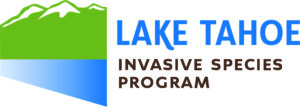 The Lake Tahoe Aquatic Invasive Species Program is implemented by 40 public and private partner organizations, including federal, state, and local jurisdictions, research partners, public utility districts, and private marinas. The Tahoe Regional Planning Agency and the Tahoe Resource Conservation District lead the program in collaboration with the public and private partners. The program’s mission is to prevent, detect, and control aquatic invasive species in the Region so that future generations can enjoy Lake Tahoe.
The Lake Tahoe Aquatic Invasive Species Program is implemented by 40 public and private partner organizations, including federal, state, and local jurisdictions, research partners, public utility districts, and private marinas. The Tahoe Regional Planning Agency and the Tahoe Resource Conservation District lead the program in collaboration with the public and private partners. The program’s mission is to prevent, detect, and control aquatic invasive species in the Region so that future generations can enjoy Lake Tahoe.
The Tahoe Regional Planning Agency leads the cooperative effort to preserve, restore, and enhance the unique natural and human environment of the Lake Tahoe Region, while improving local communities, and people’s interactions with our irreplaceable environment. For additional information, contact Jeff Cowen, Public Information Officer, at (775) 589-5278 or jcowen@trpa.gov.
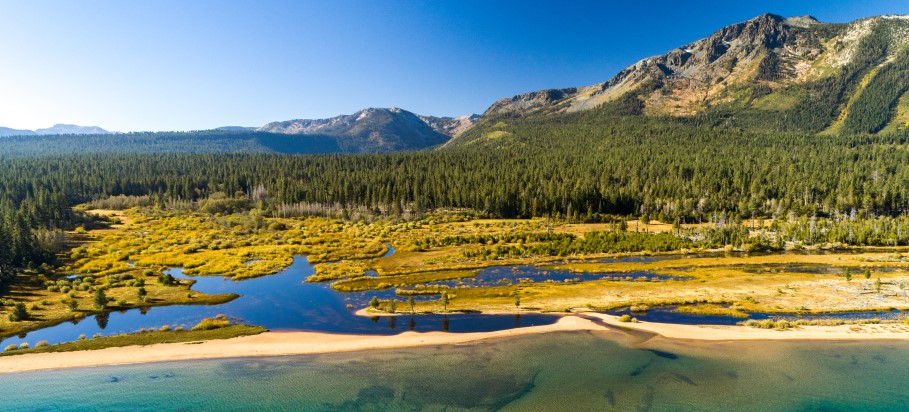
Sep 22, 2023
By Julie Regan
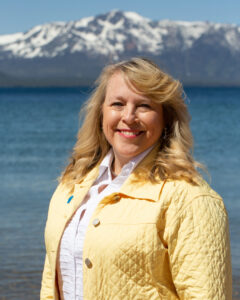 Whether you are getting out this weekend for Tahoe’s amazing fall weather or you spent time this summer on the lake, trails, and beaches, you’ve been enjoying some of Lake Tahoe’s greatest assets: hundreds of square miles of public land and water. This Saturday is National Public Lands Day and a timely reminder of how fortunate we are that conservation programs under the Lake Tahoe Regional Plan have protected open space, set aside approximately 9,000 vacant lots in residential neighborhoods, and added more than a half mile of public shoreline.
Whether you are getting out this weekend for Tahoe’s amazing fall weather or you spent time this summer on the lake, trails, and beaches, you’ve been enjoying some of Lake Tahoe’s greatest assets: hundreds of square miles of public land and water. This Saturday is National Public Lands Day and a timely reminder of how fortunate we are that conservation programs under the Lake Tahoe Regional Plan have protected open space, set aside approximately 9,000 vacant lots in residential neighborhoods, and added more than a half mile of public shoreline.
With multiple threats emerging from climate change, aquatic invasive species, wildfire, and impacts around outdoor recreation and tourism, this Public Lands Day must be the call to step up our stewardship of Lake Tahoe’s incredible public recreation resources. The lake and land here are the public’s playground, but this comes with a deep and sacred responsibility to preserve them to enjoy today and in the future, while working to improve access for all.
The news this week that invasive New Zealand mudsnails have been discovered in Lake Tahoe comes at a time when warming temperatures and the cross-cutting impacts of climate change are challenging all of us to double down on our protection of these resources.
Aquatic invasive species (AIS) pose serious threats to Tahoe’s water quality and native species. The rising temperature of the lake, warmer winters, and extreme storms combined with prolonged drought all increase the chances that invasive fish, plants, and shelled animals can take hold and spread here.
The Tahoe Regional Planning Agency (TRPA) and our partners in the Lake Tahoe Aquatic Invasive Species Program have been taking determined steps to protect the lake from new and existing invaders. Now in its 15th year, the program’s collaborative, science-based planning has helped put preparations in place to respond quickly to the New Zealand mudsnail discovery. In fact, it was planned surveys of the lake bottom by divers working for the program that led to the detection and identification of the new invasive species off the South Shore.
Actions since the species was confirmed have followed protocols of the Early Detection and Rapid Response Plan. An incident team from TRPA and Tahoe Resource Conservation District (Tahoe RCD) has mobilized multiple dive contractors that were in the wings to complete a lake-wide survey. We expect to have more information and findings in the coming weeks and will be sharing information as it is available.
Our minds quickly go to “how” and “why” in an incident like this. Aquatic invasive species can be transported on boats and boat systems, trailers, non-motorized craft, fishing gear, and even life jackets and water toys. If not Clean, Drain, and Dry, which is the call of aquatic invasive species prevention everywhere, everyday gear of “life on the lake” can increase the risk of their spread to different waterbodies.
Earlier this month, the same divers with Marine Taxonomic Services, Ltd. who discovered the New Zealand mudsnails were working in Emerald Bay to remove aquatic invasive weeds from a project area that had been weed-free for nearly 10 years. In total, 200 acres of the lake bottom have been treated so far to reduce aquatic invasive weeds and Asian clams here before TRPA and Tahoe RCD established one of the nation’s first fully mandatory motorized watercraft inspection programs in 2008.
Since then, we have worked collaboratively to redefine AIS prevention and created a program that is considered the gold standard for the nation. Boat inspectors have conducted more than 107,000 inspections and led innovation in watercraft decontamination and efficiency. We are also making the basin safer by building partnerships throughout the West and strengthening programs nationally.
Aquatic invasive species threaten more than Tahoe as well. As we are responding to the New Zealand mudsnail here, wildlife managers in Idaho have confirmed the presence of larvae of the highly destructive quagga mussel in the Snake River, a massive watershed that connects four states to the Pacific Ocean.
While there is no silver lining when it comes to a new invasive species discovery, having one of the most protective and collaborative programs in the nation is playing a big role in how TRPA and our partners are managing the newest threat to the lake. We appreciate you sharing our dedication to protecting the waters of the Lake Tahoe Region and for continuing to support the aquatic invasive species program.
Learn more about the New Zealand mudsnail and what you can do to protect our lake and lands on our aquatic invasive species pages.
Julie Regan is Executive Director of the Tahoe Regional Planning Agency








 This summer I had the pleasure of meeting with community members around the lake through a series of TRPA Talks that were both enlightening and inspiring. As I approach completion of my first year as Executive Director of the Tahoe Regional Planning Agency (TRPA), I am reflecting on the issues that are top of mind in our community and am grateful for the kindred spirits that are passionate about Lake Tahoe.
This summer I had the pleasure of meeting with community members around the lake through a series of TRPA Talks that were both enlightening and inspiring. As I approach completion of my first year as Executive Director of the Tahoe Regional Planning Agency (TRPA), I am reflecting on the issues that are top of mind in our community and am grateful for the kindred spirits that are passionate about Lake Tahoe.






 The Lake Tahoe Aquatic Invasive Species Program is implemented by 40 public and private partner organizations, including federal, state, and local jurisdictions, research partners, public utility districts, and private marinas. The Tahoe Regional Planning Agency and the Tahoe Resource Conservation District lead the program in collaboration with the public and private partners. The program’s mission is to prevent, detect, and control aquatic invasive species in the Region so that future generations can enjoy Lake Tahoe.
The Lake Tahoe Aquatic Invasive Species Program is implemented by 40 public and private partner organizations, including federal, state, and local jurisdictions, research partners, public utility districts, and private marinas. The Tahoe Regional Planning Agency and the Tahoe Resource Conservation District lead the program in collaboration with the public and private partners. The program’s mission is to prevent, detect, and control aquatic invasive species in the Region so that future generations can enjoy Lake Tahoe. 
 Whether you are getting out this weekend for Tahoe’s amazing fall weather or you spent time this summer on the lake, trails, and beaches, you’ve been enjoying some of Lake Tahoe’s greatest assets: hundreds of square miles of public land and water. This Saturday is
Whether you are getting out this weekend for Tahoe’s amazing fall weather or you spent time this summer on the lake, trails, and beaches, you’ve been enjoying some of Lake Tahoe’s greatest assets: hundreds of square miles of public land and water. This Saturday is